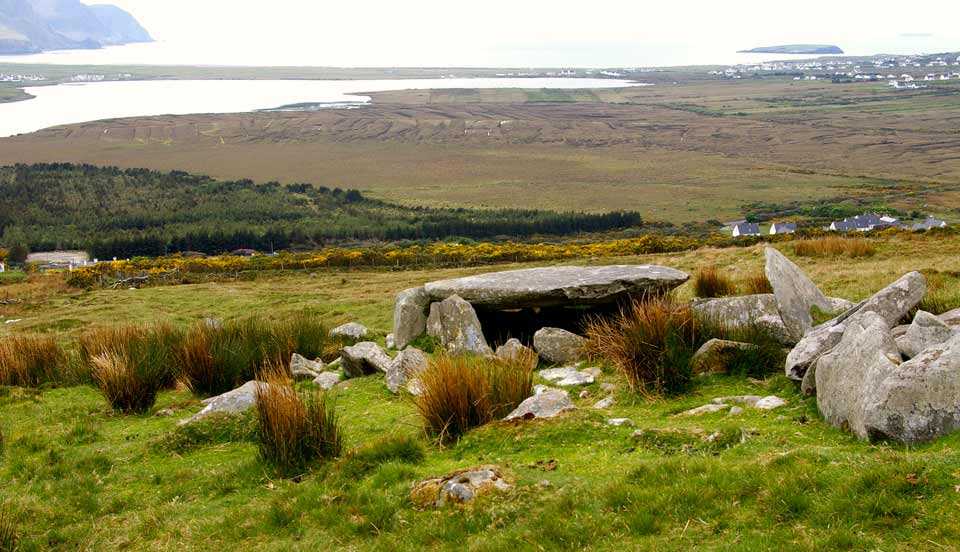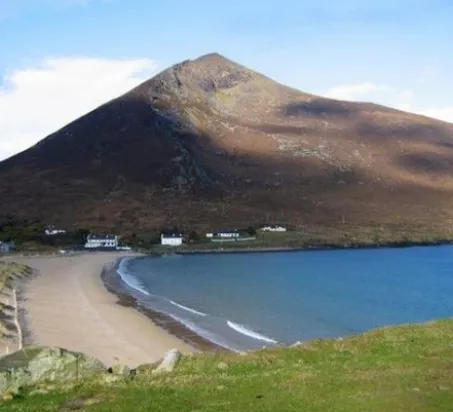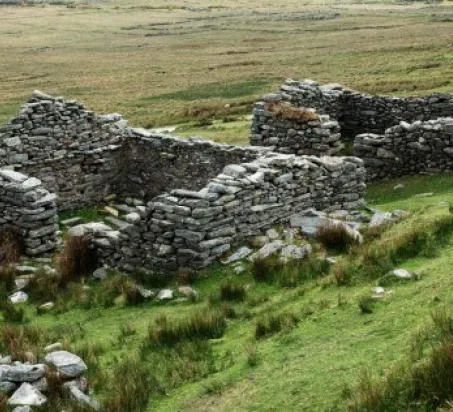Achill island has a long and troubled history. The first people came to the island about 5,000 years ago and since then Achill has witnessed the arrival of Christianity, the power of Granuaile, plantations from Ulster, great rows between Protestants and Catholics and the decline of the ancient disappearance way of life.
Early history
Achill has a history of human settlement that is at least 5,000 years old. The remains of megalithic tombs and monuments suggest settlement by Neolithic man in the 3rd or 4th centuries BC. These people significantly changed the landscape of the area, which at the time was heavily forested. Neolithic culture brought farming to Achill, requiring the clearing of forest for cereal crops, and walled fields for livestock. It is estimated that at the end of the Neolithic period, about 4,000BC, Achill had a population of 500-1000 people.
Evidence of Bronze Age (c. 2000BC) settlement on Achill includes hut platforms and associated field systems and enclosures in the area of Slievemore. The remains of several promontory forts along the coast show that settlement expanded across Achill Island in the Iron Age (c. 400BC).
The arrival of Christianity
The early medieval period, dating from about 400 AD, saw great expansion in agriculture, in particular with the introduction of more iron tools, including the plough. Evidence of early medieval artefacts has been reported at Keem Bay, Slievemore, Kildavnet and Achill Beg island. The arrival of Christianity into Ireland at about this time is reflected in two remnants on Achill: at Kildavnet the ancient church is named after St. Damhnait (St. Dympna), a 7th century saint, and at Slievemore there is an ancient church site and Holy Well, both dedicated to St. Colman, also a 7th century saint.
The O’Malley’s and Granuaile
Achill lay within the ancient Kingdom of Umaill which was ruled at various times by a small number of families or clans including the Butlers, the Burkes, the O’Connors, the O’Donnells and, probably most famously, the O’Malleys. The name O’Malley is still common in Achill today, and the original Clan O’Malley has had links to the area since at least the 12th century. The best known member of this family was Granuaille (Grace O’Malley), the legendary Pirate Queen whose son own Kildavnet Castle. Under her leadership the O’Malleys controlled the waters of the western seaboard, imposing taxes and levies on all ships passing through this territory.













